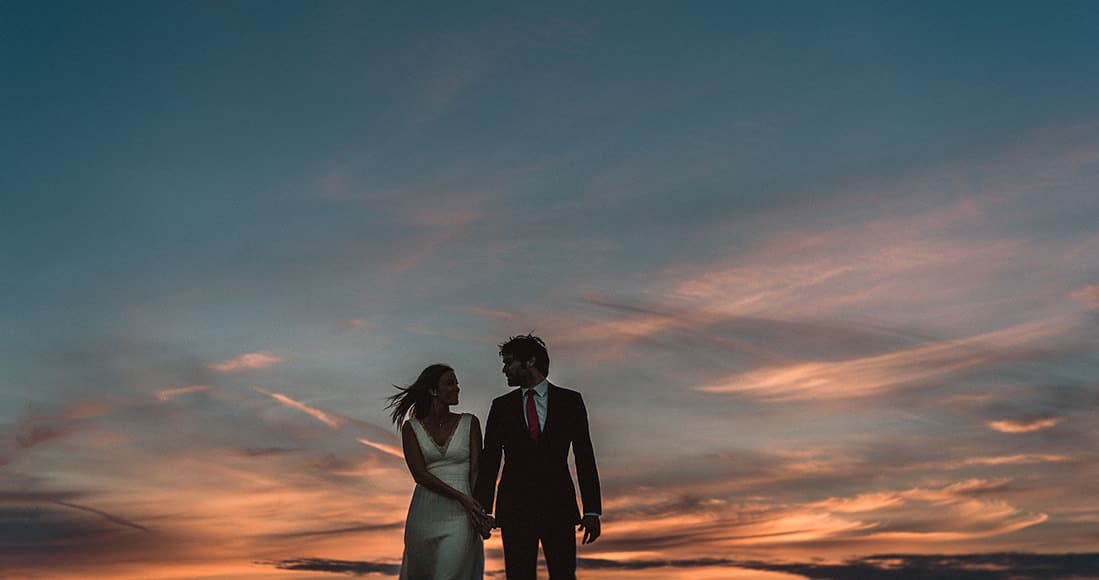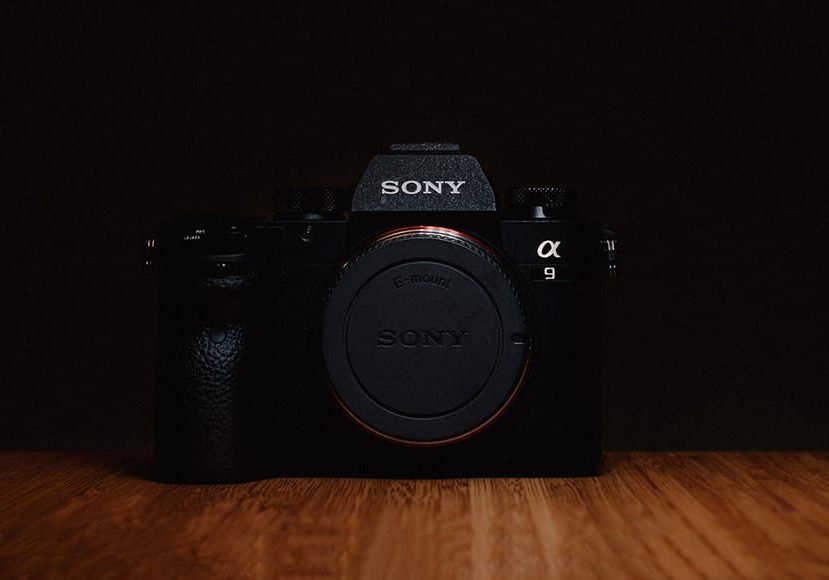
Sony Alpha a9 Full-Frame Mirrorless Camera Review
Don't miss this real world Sony a9 review by a pro photographer who put the mirrorless camera through its paces in multiple challenging environments.
Camera Reviews | Photography Gear Reviews | Sony Camera Reviews | Last Updated: June 14, 2022
This is a real-world Sony a9 review by Tuscany based international wedding photographer Roberto Panciatici. Roberto spent a couple of months shooting with the Sony a9 to evaluate its performance in various professional environments. Here’s what he found:
My review of the Sony a9 is based on my utilization of the camera in the field for about 2 months. Initially I used it mainly with a Nikon D750 and a Nikon D810, but I can also compare it with the Nikon D5 and the Canon 1Dx Mk II, which I also used.
In the end I began doing jobs entirely with the Sony a9, hence the creation of this Sony a9 review for my site and Shotkit.
I won’t limit myself to giving an evaluation of the technical details, but will try to share with you both the positive and negative feelings I have had while using this camera for my everyday wedding photography work.
The Sony a9 is definitely a camera with a lot of plus points to discover, and a few stumbling blocks too – as any instrument obviously has, but some of which can be considered as characteristics, and not necessarily defects. As you read my Sony a9 review you’ll understand what I’m talking about.
[UPDATE March 2019: Sony a9 Firmware Version 5]
A significant software update that brings AI-driven autofocus capabilities, improves image quality, and introduces a range of customer-requested workflow improvements.
Sony a9 Review | Ergonomics & Design
At first glance, the Sony a9 seems small and definitely doesn’t give the impression of a professional camera body.
Picking it up doesn’t belie this sensation, and the body doesn’t transmit a feeling of solidity to the touch, unlike its direct competitors (Nikon D5, Canon 1dx MK II etc), even though the Sony a9 body is made of magnesium alloy.
The sensation when you use a Sony for the first time, at least for me, is that it’s just not very practical – in a lot of different ways. So it wasn’t love at first sight by any means!
The usual resistance to change that we all feel when we’re thinking of switching brands is amplified by really non-user-friendly software interface, typical of a Sony mirrorless camera– the menu is just a jungle, and a camera body that’s not solid and comfortable like I find Nikon, Canon and Leica bodies to be.
It’s important to give yourself time to get to know the camera to get over this initial indifference, because as I mentioned, a lot of aspects of this camera might seem like annoying defects, when in reality they’re features to understand and utilize. All of the advantages are waiting there, beyond the initial effort.
The Sony a9’s lightness is remarkable, especially if you’re used to classic dSLRs like I am, and this positive sensation increased exponentially when I realized that, sure, it hasn’t got the strong initial impact of Nikon and Canon flagship models, but it certainly has the heart of a flagship.
Grip
The ergonomics of the Sony a9 are pretty good, although the body is small. To give it better stability, or if you’ve got large hands, you can purchase the external grip with an extra battery case, or the Sony GPX1EM mini grip pictured below.
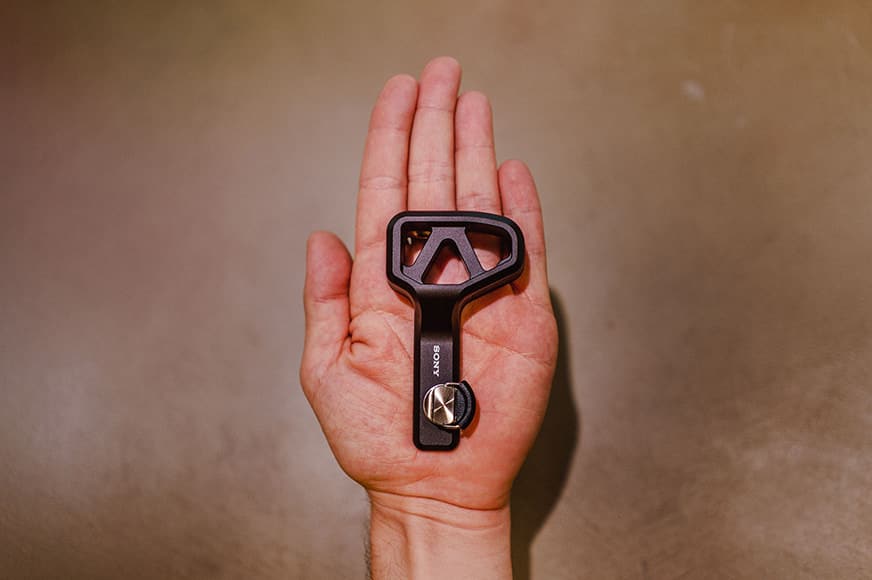
Sony a9 grip is small and lightweight but the design is somewhat questionable.
This is a really fantastic, well-made grip, but remember that you can only use it with classic shoulder straps. Once it’s attached to the camera, you won’t be able to put on any other types of camera straps like the Holdfast MoneyMaker etc., and you’ll be unable to attach a travel tripod too.
This is really a shame – all that would be needed to correct the problem is a fastener inserted in the lower part of the grip; there are several empty spaces where it would have been easy to add a small hole with screw, and it all would have been so convenient. Too bad!
Dials
The dials on the top of the Sony a9 let the user regulate a few basic functions, like the burst-speed intensity (3 different settings: 5, 10 and 20 frames per second) and shot style, the auto focus mode (AF-s, AF-c, DMF and MF), exposure compensation and the camera’s various programs (Auto, P, A, S and M, plus three different customizeable settings) and video functions (Video and S&Q).
Right away these dials give me an sense of quick utilization and good practicality. The only dial I would have preferred to have a bit more protruding and more practical is the exposure compensation one, but once you’ve gotten familiar with it you’ll be able to use if well enough.
The camera responds very well to commands and is quick to turn on, although obviously not as super-speedy as the dSLR (the Nikon D5 can be considered instantaneous in passing from off to ready to shoot).
During a long work day, for photographers like me who are used to turning off the camera after shooting, this could generate some slight annoyances, but it’s also true that you just need to change your habit and not turn the camera off to avoid this little problem altogether.
Tilt Screen/Live View
The tilt screen on the Sony a9 is excellent for photographers like me who shoot mainly using Live View. Its only “limit” is that it doesn’t lay down completely flat, as the Nikon D750’s does.
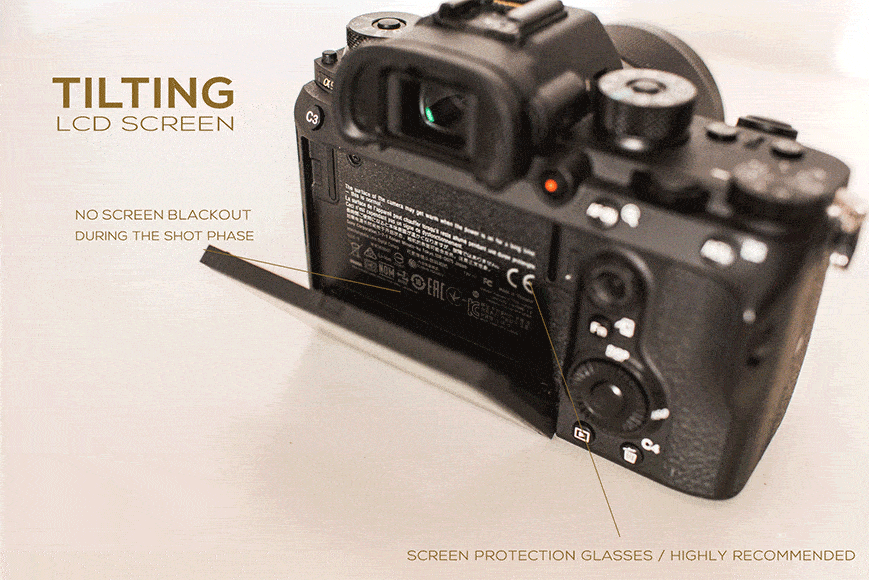
The tilting screen of the Sony a9 provides multiple viewing angles.
The AF speed during Live View mode is far better than any Nikon or Canon body (the best dSLR I have ever tried in terms of shot speed in live view is the 1Dx MK II), and it’s fun and super fast.
What’s more, there’s no screen blackout during the shot phase, which is so freeing for me! The luminosity and definition are excellent, even in strong light. However, I always prefer to use the internal finder since it guarantees greater control of the scene.
A suggestion: given the how easy it is to accidentally scratch the live view screen, I recommend you use a screen protector. I use this one by Expert Shield, which is extremely easy to mount and can save you from scratching and breakage.
Battery
If you think that might be a problem for the battery, I’m way ahead of you: don’t worry! The Sony a9 battery is truly superb, considering that the live view or the view finder are constantly active!
I’m not a Nikon D5 user so I’m not used to doing a full-day wedding with a single battery, but I’ve been able to do just that with this camera.

Sony a9 | Sony 55mm f/1.8
On average, with the Nikon D750 and/or the Nikon D810, on which I use the live view a lot, I consume a battery and a half per camera, but with the Sony a9, after 10 hours I still had 26% charge remaining.
That makes me think that having two batteries (these Sony Z-series batteries) is the perfect solution to keep all problems at bay and guarantee you can work worry-free a full day of 2 or more shootings with no need to recharge, which is important for me given all the traveling I do.
Durability
This is obviously just a hypothesis, since no-one can say whether a camera will last an average amount of time, or be worse than others in this sense, but I can mention a few considerations.
After just a couple of months of use, the Sony a9 is already showing the first hints of color loss, which is certainly not a good sign.
I’m surely not an average user – I usually shoot between 40 and 60 wedding per year + engagement and portraits sessions (I usually use Leica for my personal work), nor a person who takes the greatest care of his equipment, but when the casing has already begun to lose color after such a short time, this alarms me somewhat.

Although the body itself is well-built and durable, it does start to show signs of wear and tear after a few months of moderate use.
There’s something else to consider here though – having fewer mechanical parts that its competitors (since there’s no mirror), it should have fewer parts subject to wear, and thus to break. We’ll see!
Specs
– Sensor: BSI-CMOS (35.6 x 23.8 mm), 24 megapixels
– Image Size: 6000 x 4000
– ISO Sensitivity: Auto, ISO 100-51200 (expands to 50-204800)
– Storage Media: 2x SD •Continuous Shooting Speed: 20.0 fps
– Max Shutter Speed: 1/32000 sec to 30 sec
– Number of AF Points: 693 AF points
– Wi-Fi Functionality: Built-in
– Weight (Body Only): 673 g
– Dimensions: 127 x 96 x 63 mm
Sony a9 Review | Menus & Personalization
The menu on the Sony a9 is a real labyrinth, but it’s also full of buried treasures. While on the one hand it’s complicated and tedious, on the other it offers a lot of possibilities.
A suggestion for using the menu: create your own simplified menu, so you don’t have to go looking through all the menu items every time.

Sony a9 | Sony 28mm f/2
The Sony a9 is completely personalizable in terms of buttons, not only the individual functions, but also with multiple combinations of functions that can be activated and deactivated at the press of a button. This level of personalization from Sony is amazing, in my opinion.
Once you’ve found the right system to using the Sony a9’s complex menu system to meet your needs, it’d be really hard to do without it.
The camera has 3 fully customizeable buttons: a C1 and C2 button on the upper part near the shutter button, and a C3 on the left side of the back and AF-ON on the right side. You can also have 3 different personalizations, each selectable with the dial on top of the camera.
This gives you flexibility, and is definitely another big point in favor of the Sony a9, and the majority of pro-level Sony cameras in general.
Sony a9 Review | AF System
Hell yeah!!! The Sony a9’s AF system is absolutely extraordinary – anybody switching from a Nikon, like me, but who doesn’t usually work with a Nikon D5, will be flooded with great joy.
For those who do work with a Nikon D5, you should know that the Sony a9’s auto focus is superior to the Nikon flagship’s in certain conditions, and worse in others (low light), so you’ll have to weigh the pros and cons depending on what your main utilization is and decide what’s best for you.
In my own experience, the number of photos I take in low light is definitely tiny compared to the number I take during the day, so this makes the issue irrelevant for me. In any case, this drawback can be completely overcome if you use an AF assistant like flash, or the in-camera one, which the flagship ones don’t even have (who knows why).
AF-C Mode
There are numerous strong points to the AF system on the Sony a9, and I would challenge anyone not to get attached to an AF with more than 600 focus points throughout the frame. I know, some of you are used to using only the central focus point and then re-composing the photograph.
That’s what I thought the first time I used this camera – but I hadn’t tried the Eye Focus yet, this camera’s AF with facial recognition and subject tracking.
With the Sony a9, the AF-C era has officially been ushered in, at least for me. Tracking is really precise – better than any other camera I’ve ever tried during the course of my career.
Subjects are quickly caught and the camera doesn’t let them go, no matter how fast they move.
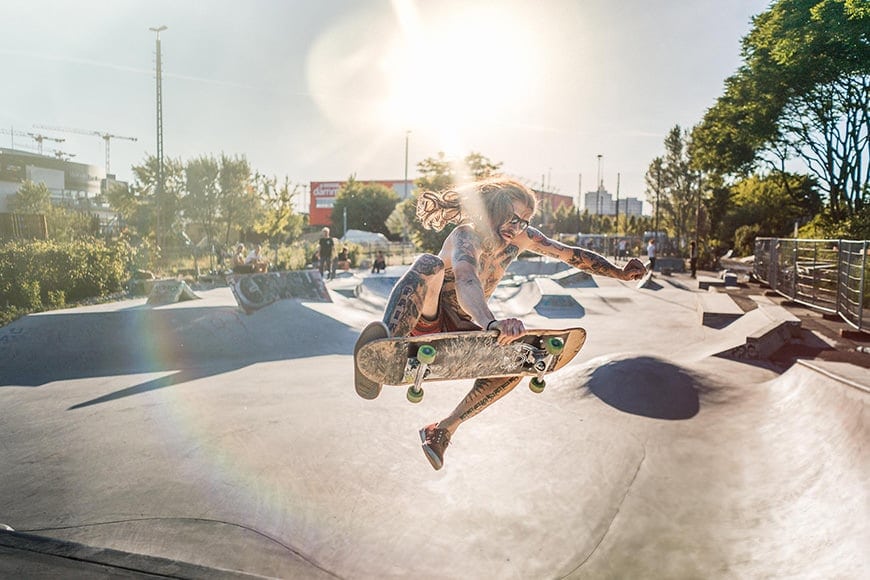
Sony a9 | Sony 28mm f/2
For the first time in my life, I feel sure of what I’m shooting, a sensation I don’t recall having had while using mainly the Nikon D750 and Nikon D810, and this sensation of surety gives me enhanced confidence on the job, as I don’t have to worry whether photos are in focus or not. I just shoot!
If we consider that the only cameras comparable to this Sony a9 in terms of auto focus performance are actually the Nikon D5 and the Canon 1Dx MK II, which weigh respectively 1,415 grams and 1,530 grams versus the 673 grams of the Sony a9, I’d say I definitely made a good choice here, given that I travel a lot and hate having heavy, bulky equipment in my camera backpack (read this post about my quest for the perfect camera backpack) !
Eye Focus Mode
The Eye Focus deserves not only a “whoa!” but also a little discussion of its own. It’s precise, fast and extremely functional. I’m crazy about this function, the only drawback of which is that it sometimes doesn’t choose the nearest eye.
Essentially, with Eye Focus mode active, the Sony a9 immediately locks on to your subject’s eye and follows it around the EVF as your subject moves… even if they are wearing sunglasses?!

Eye Sensor mode on the Sony a9 is so good it has to be seen to be believed.
Personally, I’ve set it to activate with the AF-ON button so I can quickly chose when to use it. For me, this function is the camera’s umpteenth game changer. Obviously, and this goes for face detection as well, you need to utilize it properly, i.e. not in the middle of a crowd of people.
Sony a9 Review | Shutter & Buffer Performance
The Sony a9 has two different types of shutters: a mechanical one and an electronic one. The electronic shutter reaches 1/32000, and I’d say that already just about closes this chapter with a great big whoa!
The advantages of such a fast shutter speed means you can shoot wide open at any aperture, even in strong sunlight. In my work I exclusively use fast prime lenses, and being able to shoot at maximum aperture even with strong light is really a lot of fun, as well as a great practical advantage.
The camera is just a whole different animal than models like the Nikon D750 or the Canon 6d, which only reach a shutter speed of 1/4000, making it technically impossible to obtain the same results in terms of yield. And the comparison also holds for cameras with 1/8000 shot speeds!
In this respect, the Sony 9 is absolutely a game changer!
The mechanical shutter, which only makes sense for flash synchronization and when shooting over 25600 ISO, reaches 1/8000 like those of many competitors, but I immediately deactivated it because it’s useless to me 95% of the time.

Sony a9 | Sony 28mm f/2
The electronic shutter can also be set to silent mode, and I can assure you that being able to shoot in absolute silence is yet another game changer – once you’ve been able to work while preserving the atmosphere and without creating the slightest annoyance, it’s hard to go back to anything else!
Still, I did personalize a button to reactivate the sound, because sometimes it’s important for the people you’re photographing to hear the click so they react in some one when a photo is taken.
When the electronic shutter is in silent mode, there are 4 different ways you can set the camera to let you know you’ve taken a photo.
As for the buffer on the Sony a9, it has a technical limit of 260 RAW files in succession, all of which are completely downloaded in about 35~40 seconds! Translated into practical terms, this means that as long as you use a good memory card such as this Sony one, the buffer has no limits! What can I say? Fantastic!
The only drawback with this buffer, which I hope Sony corrects in the next version of its firmware, is that during the downloading operation, there’s no way to access the camera’s menu. Frankly, I don’t know why. It doesn’t block the camera’s function, though, or at least it hasn’t yet in my experience.
Another notable feature of the Sony a9 is that it has dual slots for SD memory cards – a first for a full frame mirrorless camera. Surely more mirrorless camera manufacturers will follow suit soon…
Sony a9 Review | Dynamic Range
As for the dynamic range of the Sony a9, the files are excellent for my purposes. Sure, it’s not the Nikon D810 (which can’t be beaten for dynamic range at low ISOs), but there are so many other great features of the Sony a9, that the dynamic range of “only” 3+ stops doesn’t make me miss the Nikon D810 files at all.
Here’s an example of an underexposed image pushed 3 stops in Lightroom to recover lost shadow detail.


My sensation is that shadows are more easy to make up for than strong, high light; I don’t know if that’s actually technically true, but it’s my impression. So the dynamic range is not particularly surprising, but it serves its purpose.
Sony a9 Review | High ISO Performance
Long story short – the Sony a9 isn’t particularly outstanding at high ISO. I can comfortably use it up to 12800 ISO, but I do make sure the exposure is correct when I’m working in low light.
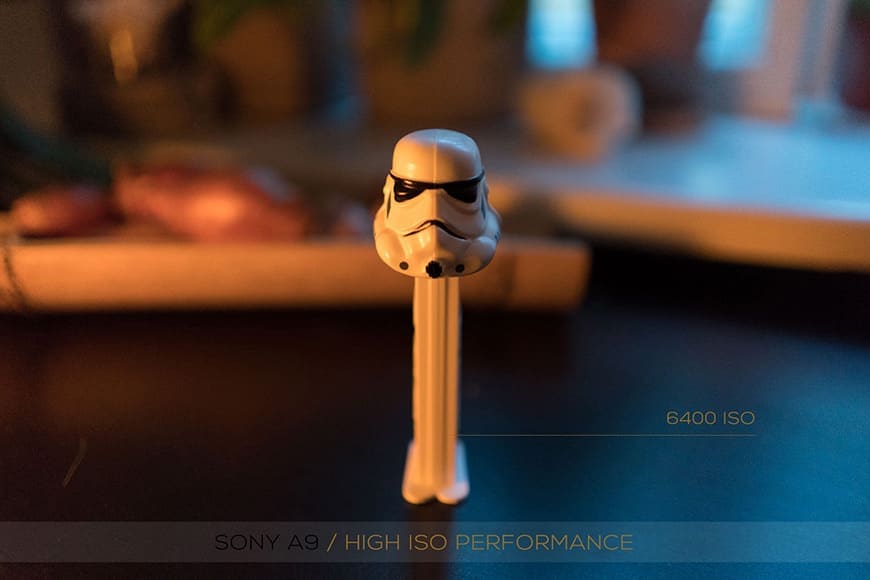

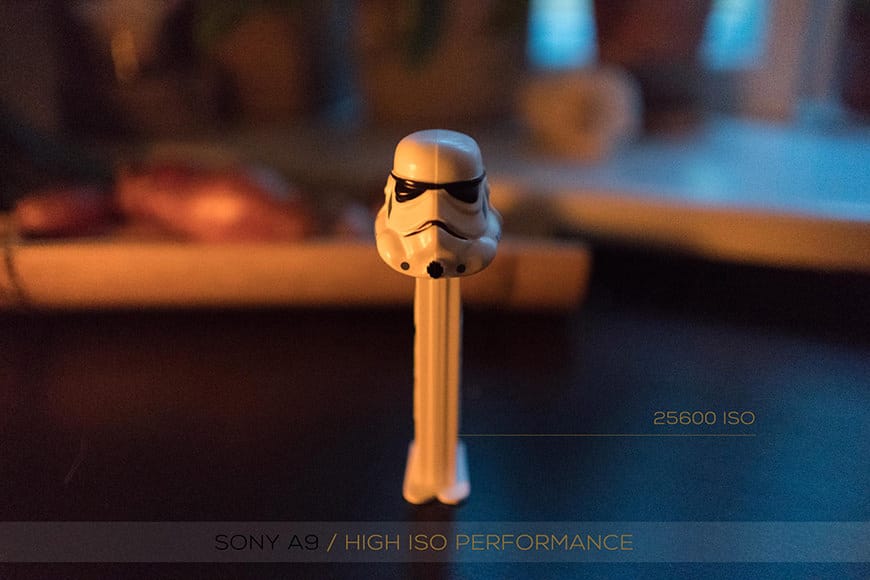



Sony a9 Review | Conclusion
The Sony a9 is the first full frame mirrorless camera that can really compete with the best dSRLs in the market.
Aside from the usual mirrorless vs dSLR pros and cons, the Sony a9 offers several notable advantages when compared to Nikon’s expensive flagship dSLR, the Nikon D5.

The Sony a9 mirrorless camera vs the Nikon D5 dSLR
I’d been looking for a camera like the Sony a9 for a long time, and I’m glad I had the chance to test it out right when it came on the market.
I’m one of those people who’s convinced that pretty much every camera on the market today is capable of guaranteeing excellent results – in fact, what I mainly evaluate is portability, weight, ease of handling, operational sureness and, or course, whether it’s fun… and the Sony a9 is great fun!
The Sony a9 is the first-born of a new era, an era when we can finally consider the best mirrorless cameras suitable for professional photography with no reservations.
It’s certainly not an immediately user-friendly camera – it takes time to get to know and understand it -, but that’s not necessarily a negative thing. It’s quite possible to get to the point where you can use it without even looking at it, just like with more “accessible” camera bodies. Sure, it’s not perfect, but hey, does the perfect camera even exist?
Guest Review by Tuscany Wedding Photographer Roberto Panciatici | www.robertopanciatici.com





